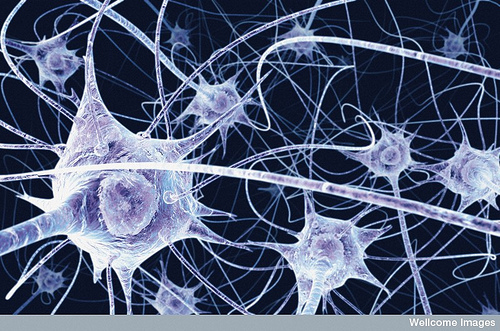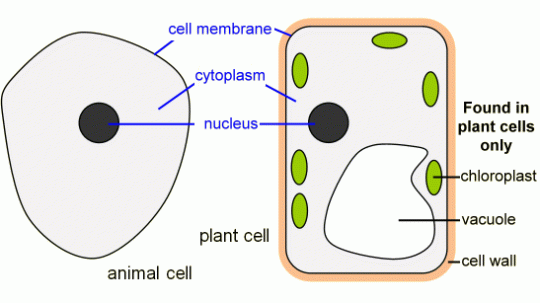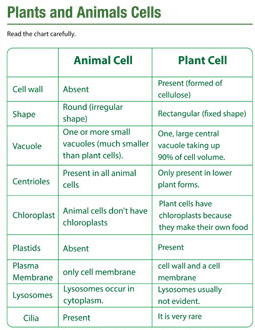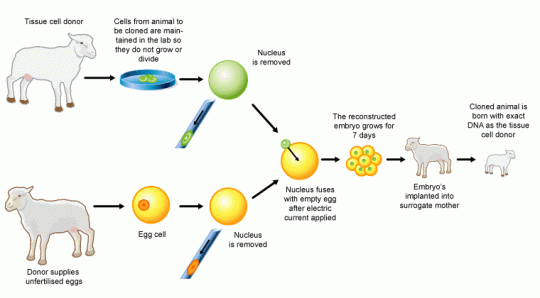Tagged: nucleus

Cell Structure: Grade 9 Understanding for IGCSE Biology 2.2 2.3 2.4
All living organisms are made from cells. Indeed the cellular nature of life is one of the universal features shared by all life on earth. Some organisms are made from just one cell (unicellular organisms) while at some point around 1 billion years ago, cells starting clumping together and specialising to form multicellular organisms such as animals and plants.
What do all cells have in common?
All cells are surrounded by a cell membrane. The cell membrane is made from a mixture of proteins and a type of lipid called a phospholipid. The cell membrane serves many functions but perhaps the most significant is acting as a partially permeable barrier that can control which molecules can enter and leave the cell.
Inside the cell membrane there is a watery solution of chemicals called the cytoplasm. The cytoplasm is the site of many metabolic reactions in the cell because many enzymes are dissolved in the cytoplasm. The cytoplasm also contains many tiny nano machines for assembling proteins called ribosomes.
And that is about it for things all cells have in common. Prokaryote cells (bacteria) have a very different cell structure with no organelles but in this section you need to understand the simplified structure of two eukaryote cells: a typical animal (on the left below) and a typical plant cell (on the right).
Both animal and plant cells have a nucleus. This is the largest organelle and contains the DNA which is the genetic material. The DNA is found in long thread-like structures called chromosomes. The nucleus controls the division of the cell and also the various functions of the cell by regulating which proteins get made.
Animal and Plant cells both contain mitochondria which are the organelles associated with aerobic respiration. Mitochondria are recognisable in the cytoplasm of the cell as sausage-shaped organelles with a folded inner membrane (see diagram above).
Structures found only in Plant cells
1) All plant cells have a thick rigid cell wall made of the carbohydrate cellulose. The cell wall allows plant cells to become turgid since when the cell takes in water by osmosis, the rigid cell wall prevents the cell from bursting. The cell wall also acts as a transport pathway across plant tissues and can provide a barrier to some pathogens.
2) All plant cells have a large permanent central sap vacuole. This organelle is bounded by a membrane called the tonoplast and in many plant cells takes up the majority of the volume of the cell.
The sap vacuole provides a compartment in the cell into which excretory molecules can be moved to stop them poisoning the cytoplasm. It also plays a role in the water balance of plant cells since because of all the solute dissolved in it, the cell sap has a low water potential. This helps draw in water by osmosis from the cytoplasm and hence from outside the cell across the cell membrane.
3) Many but not all plant cells contain chloroplasts. These are organelles associated with the process of photosynthesis. Chloroplasts can be recognised in a light microscope image as small, green structures in the cell. The green pigment comes from the chlorophyll molecules that trap energy from sunlight. In an electron micrograph, chloroplasts are distinguished due to their stacks of membrane discs called grana.
Differences between plant and animal cells
Cloning in Mammals: Grade 9 Understanding for IGCSE Biology 5.19B 5.20B
The most famous sheep in the world currently resides in a display cabinet at the National Museum of Scotland. Dolly became internationally famous in 1996 as the first animal cloned using a nucleus from an adult animal. Cloning experiments had been going on since the 1950s but previous to Dolly only embryonic cells could be used as the source of the donor DNA.
So how was Dolly the sheep made? She was a clone of an adult sheep and because the cell used to provide the nucleus from this adult donor was from an udder cell, the researchers decided to call her Dolly after the American singer Dolly Parton. (No further explanation required but the photo of Dolly Parton below might give you a clue….)
The technique used to make Dolly was given the catchy title somatic cell nuclear transfer. A nucleus was taken from an adult cell in the udder (somatic cells are any cells whose DNA will not be inherited to the next generation) and this was fused with an enucleated egg cell (an egg cell which has had its nucleus removed). This cell contains the nuclear DNA from the adult donor but will divide and develop into an embryo. The embryo can then be implanted into the uterus of a surrogate sheep for it to complete its development.
You can see that three sheep (all female in this instance) were used to produce Dolly. The tissue cell donor provided the udder cell and all the nuclear DNA for the cloned sheep. A second sheep provided the egg cell which was then enucleated. And finally a third sheep acted as a surrogate mother and so provided the uterus in which Dolly would develop to birth. The researchers cleverly used three breeds of sheep so they could check that the various processes all worked correctly.
Potential Applications of Cloned transgenic animals
If researchers combine this “Dolly technology” with the ability to genetically modify the embryonic cells produced, then it will be possible in the future to produce cloned transgenic animals. A transgenic organism is one that contains DNA from more than one species.
One potential application is that cloned animals could be genetically-modified to produce human antibodies. These polyclonal antibodies are useful in treating various medical conditions (see the New Scientist article below)
https://www.newscientist.com/article/dn2658-cloned-cows-produce-human-antibodies/
A second potential application could be to use cloned animals that have been genetically modified as potential donors for medical organ transplantation in humans. You all know that in most developed countries there is a shortage of organs for transplants to patients who need them. Added to this is the fact that the recipient’s immune system will recognise the donated organ as ‘foreign’ and so mount an immune response against it. This rejection can be combatted with immunosuppressant drugs but these have nasty side effects. Imagine if a replacement organ could be grown in a cloned animal for you, and this organ could express your own surface protein markers on its cell membranes. No problem with shortage of donors, no problems of rejection! Pigs are being used in research at the moment as pig abdominal organs are very similar in size to humans…. Here is a newspaper article looking at another possible way cloning technology could be applied to organ transplantation.

Cell Structure: Grade 9 Understanding for iGCSE Biology 2.2 2.3 2.4
All living organisms are made from cells. Indeed the cellular nature of life is one of the universal features shared by all life on earth. Some organisms are made from just one cell (unicellular organisms) while at some point around 1 billion years ago, cells starting clumping together and specialising to form multicellular organisms such as animals and plants.
What do all cells have in common?
All cells are surrounded by a cell membrane. The cell membrane is made from a mixture of proteins and a type of lipid called a phospholipid. The cell membrane serves many functions but perhaps the most significant is acting as a partially permeable barrier that can control which molecules can enter and leave the cell.
Inside the cell membrane there is a watery solution of chemicals called the cytoplasm. The cytoplasm is the site of many metabolic reactions in the cell because many enzymes are dissolved in the cytoplasm. The cytoplasm also contains many tiny nano machines for assembling proteins called ribosomes.
And that is about it for things all cells have in common. Prokaryote cells (bacteria) have a very different cell structure with no organelles but in this section you need to understand the simplified structure of two eukaryote cells: a typical animal (on the left below) and a typical plant cell (on the right).
Both animal and plant cells have a nucleus. This is the largest organelle and contains the DNA which is the genetic material. The DNA is found in long thread-like structures called chromosomes. The nucleus controls the division of the cell and also the various functions of the cell by regulating which proteins get made.
Animal and Plant cells both contain mitochondria which are the organelles associated with aerobic respiration. Mitochondria are recognisable in the cytoplasm of the cell as sausage-shaped organelles with a folded inner membrane (see diagram above).
Structures found only in Plant cells
1) All plant cells have a thick rigid cell wall made of the carbohydrate cellulose. The cell wall allows plant cells to become turgid since when the cell takes in water by osmosis, the rigid cell wall prevents the cell from bursting. The cell wall also acts as a transport pathway across plant tissues and can provide a barrier to some pathogens.
2) All plant cells have a large permanent central sap vacuole. This organelle is bounded by a membrane called the tonoplast and in many plant cells takes up the majority of the volume of the cell.
The sap vacuole provides a compartment in the cell into which excretory molecules can be moved to stop them poisoning the cytoplasm. It also plays a role in the water balance of plant cells since because of all the solute dissolved in it, the cell sap has a low water potential. This helps draw in water by osmosis from the cytoplasm and hence from outside the cell across the cell membrane.
3) Many but not all plant cells contain chloroplasts. These are organelles associated with the process of photosynthesis. Chloroplasts can be recognised in a light microscope image as small, green structures in the cell. The green pigment comes from the chlorophyll molecules that trap energy from sunlight. In an electron micrograph, chloroplasts are distinguished due to their stacks of membrane discs called grana.












